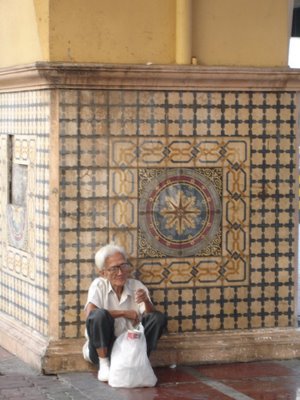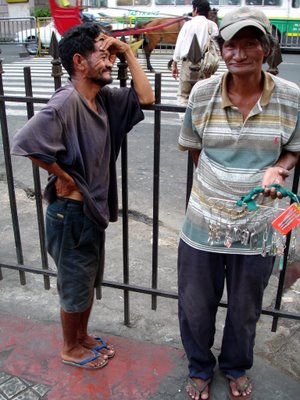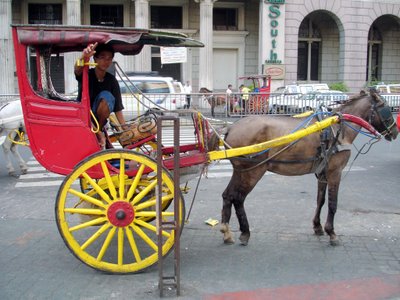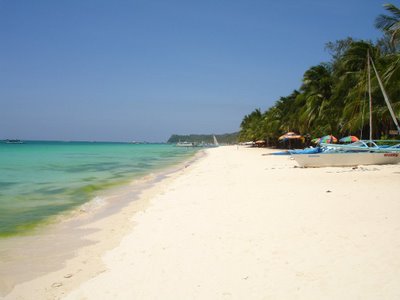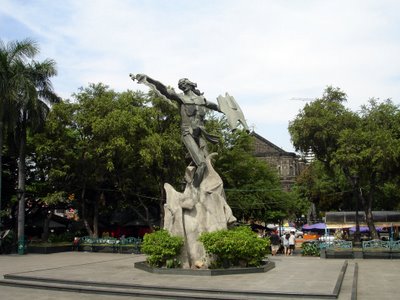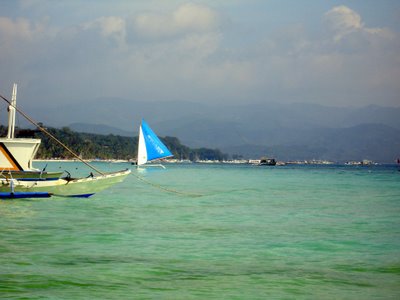A little froggee pointed out that I was overlooking the obvious, normal way of posting pictures here. Silly me. Thanks Moiji!
Here are a few random pictures from the rest of my Thailand-Cambodia trip. Click to enlarge them.
 Amok
Amok, the national dish of Cambodia, is a mildly spicy coconut milk curry dish, usually with chicken, fish, or shrimp. Very tasty!

Images of the king and queen of Thailand can be found everywhere in Bangkok and throughout the country. King Bhumibol (
poom-i-pon) was born in Cambridge, Massachusetts and is Thailand's most famous jazz composer and performer. He has played with many famous musicians, including Benny Goodman, Stan Getz, Lionel Hampton and Jack Teagarden. He also holds an honorary jazz degree from my university, UNT, among others. He's actually like 78 or 80 years old now, but all the images you see of him are of his younger years, like this one.
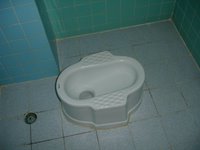
I don't know if it's a sacrilege to post the king's picture right next to that of a toilet, but there is no doubt that he has often used a toilet much like this one. Even less convenient to foreigners than the Japanese squat toilet, the Thai toilet is sometimes raised off the ground, with little wings to balance on, and it has no flush mechanism-- Usually you find a bucket of water nearby with a bowl floating in it, and you do the flushing manually.

A snack cart in Bangkok. Deep fried crickets, grasshoppers, scorpions, and grubs. I heard of one place in Cambodia where the specialty is big deep-fried spiders. But no-- I did not, would not, could not, and will not try any of them.

The road between the Thai-Cambodian border town of Poipet and the Angkor Wat anchor city of Siem Reap is, though only about 100 kilometers, a very dusty 3-hour rollercoaster ride on a heavily potholed red dirt road with a moderate traffic of jerry-rigged tractors, pickups piled improbably high with people or goods or both, motorcycles carrying anything from a trio of dead pigs to a stack of bicycles to a quartet of tiny Cambodian grannies, and also a number of other difficult-to-describe improvised vehicles. To either side of the road, the rice farms you see are heavily land-mined, so you occasionally see a de-mining team at work, as there are estimated to be as many as 2 million unexploded land mines left in Cambodia, planted as recently as 1998. (People who are missing a limb are a common sight throughout Cambodia.) The easiest way across this stretch is to find a couple of fellow travelers and negotiate a price with a share taxi, i.e. some random guy with a dirty mid-90s model Toyota Camry. The picture above could have been taken in front of any number of stilted shacks along that road, and when your driver gets low on gasoline, he'll probably stop at one of these.


